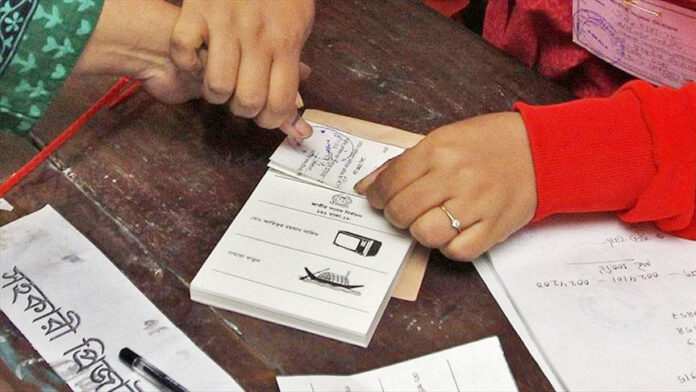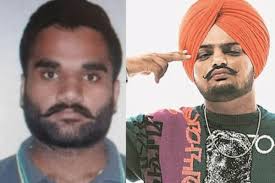Pakistan has often been compared to Bangladesh in economic numbers. The juggernaut rise of Bangladeshi exports has been seen as a marvel success story. In 2023, apparel exports reached a staggering $47 billion according to numbers released by the country’s Export Promotion Bureau (EPB). On the contrary, Pakistan’s exports have failed to grow significantly. Despite our failure to replicate the export growth model presented by the Bengalis, all hope is not lost. The democratic model of Bangladesh has emerged as an attractive case study for our political elite.
Elections are always marred by uncertainty, even in usual circumstances. However, the number of unknown variables in the present political environment will make political analysts even more nervous this time around. Judging by the Bangladesh experience, one thing is certain: democratic models are hardly a straightforward affair in South Asian nations
Sheikh Hasina Wajid, first elected to power in 1996, won elections for the fourth consecutive time by sweeping 75 percent of the national vote. The landslide win ensured that her grip on power remains as strong as ever. However, the victory has turned out to be a pyrrhic one. Voter turnout was low and there have been serious question marks over the legitimacy of the election.
Most notably, the US State Department issued a statement that it had grave concerns over reports of voting fraud and violence at polling stations. At 76, Hasina has, not surprisingly, dismissed any allegations of foul play and has channeled her messaging to focusing on the impending economic matters.
The Awami League’s victory serves as a clairvoyant for the upcoming general elections in Pakistan. The main opposition party boycotted the elections. The Bangladesh Nationalist Party (BAP) refused to participate in what it deemed a ‘mere formality’. The exercise to eliminate any semblance of an opposition was part of a strategic and calculated framework. According to the Human Rights Watch, 10,000 workers of the BAP were arrested on trumped up political charges ranging from inciting violence to corruption allegations. The top tier leadership was completely behind bars with main BNP leader Mirza Fakhrul Islam Alamgir facing up to nine charges.
While Pakistan is no stranger to such political incarcerations, the results of the Bangladeshi elections allow us to imagine a scenario of what might happen in Pakistan in a month’s time. With the PTI in disarray, not many voices are calling for a total boycott so far. That is perhaps a healthy sign. However, it is difficult not to foresee the consequences of a major party being dysfunctional– especially in the organizational sense.
Three themes dominated the Bangladeshi election. The main one was that the voters did not bother showing up. Even members of Hasina’s own party did not participate vigorously with many claiming that their candidates were already set on winning their seats. Soon after the polling closed, the Election Commission stated that the turnout had been around 40 percent. This number presented one of the lowest election turnouts in Bangladesh general elections since the 1996 February elections– also controversially won by Sheikh Hasina. The BAP’s “Hartal” was visible to see, and a savvy social media campaign showed pictures of empty pooling booths and chatting staff.
This leads us to the second theme: legitimacy. The opposition quickly picked on the murky credibility of the election commission turnout numbers– aided by perhaps a Freudian slip by the Chief Election Commissioner himself– with many claiming that turnout was in reality as low as 27 percent. The UK Foreign Office issued a statement highlighting concerns over the human rights violations that took place in the lead-up to the elections. However, other pertinent trading partners including India, China and Russia were quick to congratulate Sh Hasina on her huge victory. A state of confusion has ensued in the aftermath.
The third theme is the victory of a large number of independents. No party came second. Instead, 63 independent candidates won their constituencies. Interestingly, this has created a conundrum of finding a joint opposition group in parliament.
All three themes are extremely relevant for Pakistan as the elections approach. Will we have a similarly low turnout? The lack of charged political campaigning and a despondent national mood due to rising inflation does indicate a sense of political disillusionment. Once the elections are over, will there be similar concerns over legitimacy? Many parties are already peddling the narrative of a not-so-even playing field. The rejection of nomination papers will surely become a bone of contention on fairness and credibility. The Election Commission of Pakistan has already taken an almighty beating over the last few years from all sides. It is unrealistic to expect the ECP to gain much popularity now.
Lastly, will we see a new era of independents (‘electables’ as we call them in Pakistan)? This is perhaps the most interesting aspect of what may shape the dynamics of the next regional and national parliaments. The IPP may emerge as the small power broker as it has taken many such independents under its guise. While some erstwhile PTI leaders may take cover under the umbrella of independent symbols to make their way to Parliament.
Elections are always marred by uncertainty, even in usual circumstances. However, the number of unknown variables in the present political environment will make political analysts even more nervous this time around. Judging by the Bangladesh experience, one thing is certain: democratic models are hardly a straightforward affair in South Asian nations.























